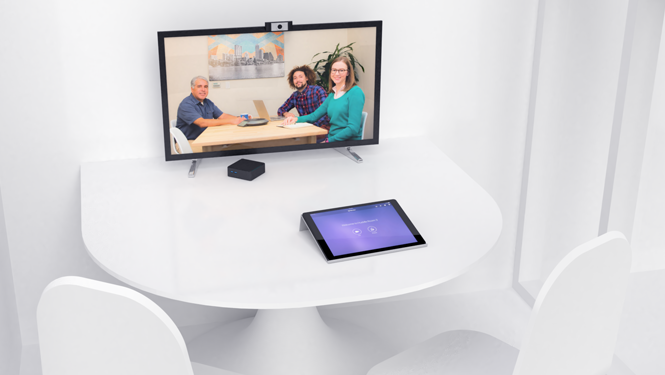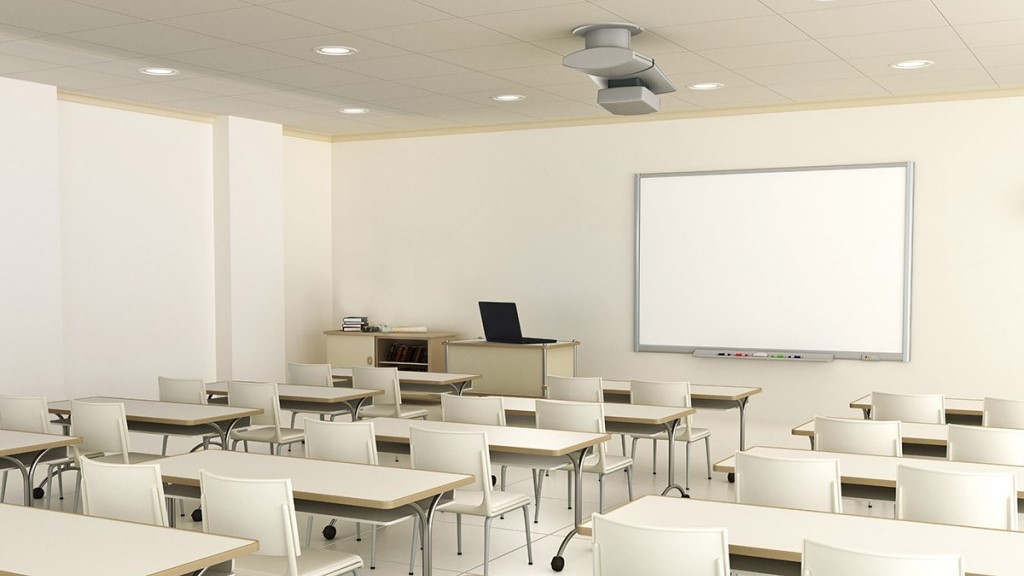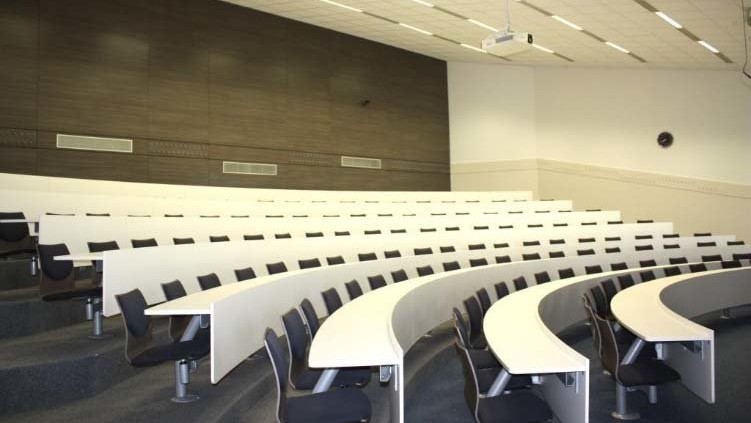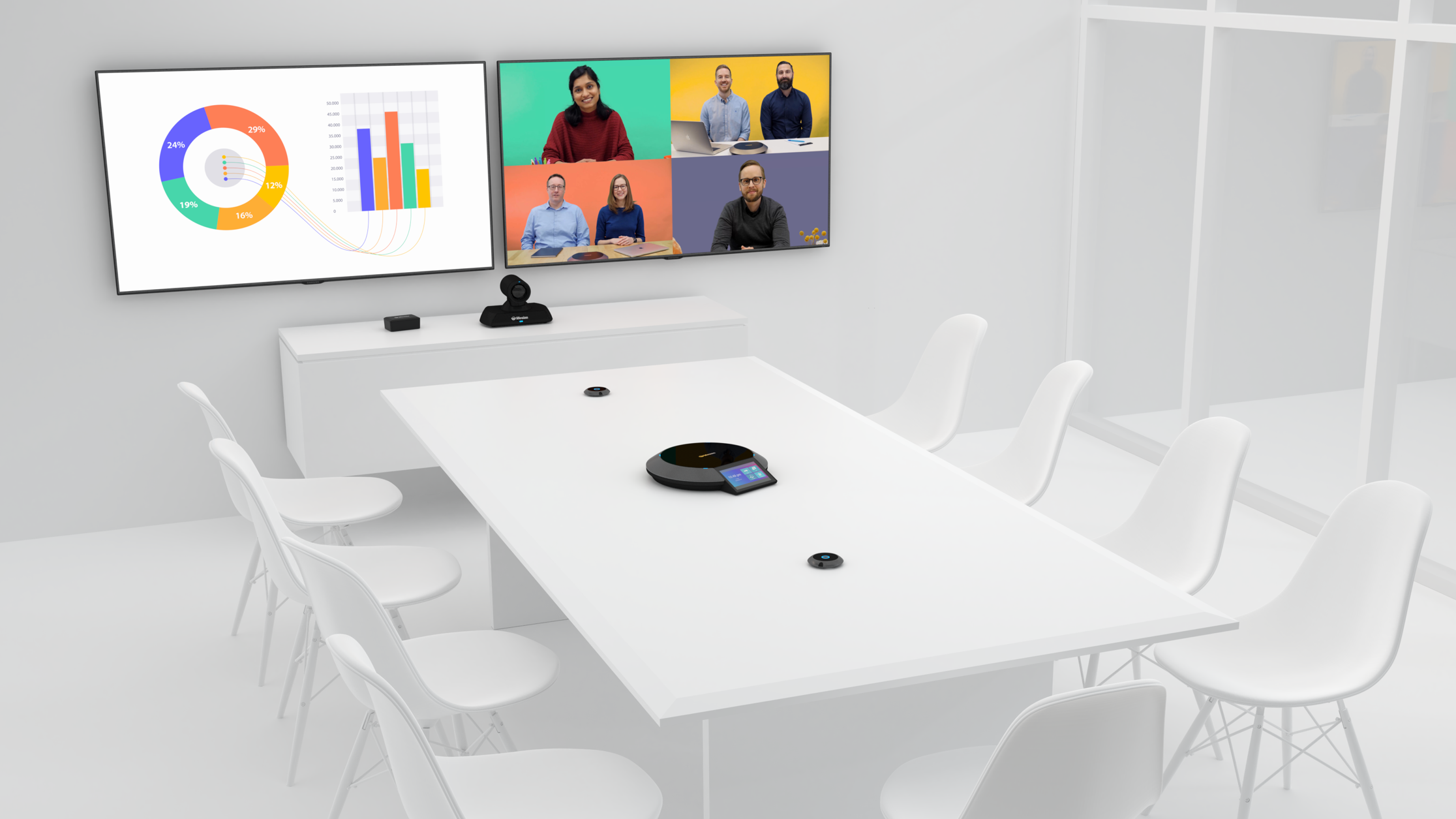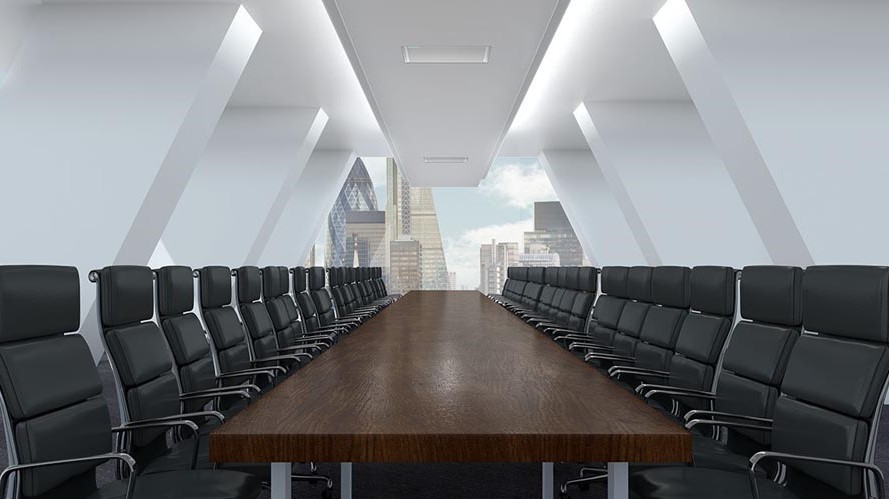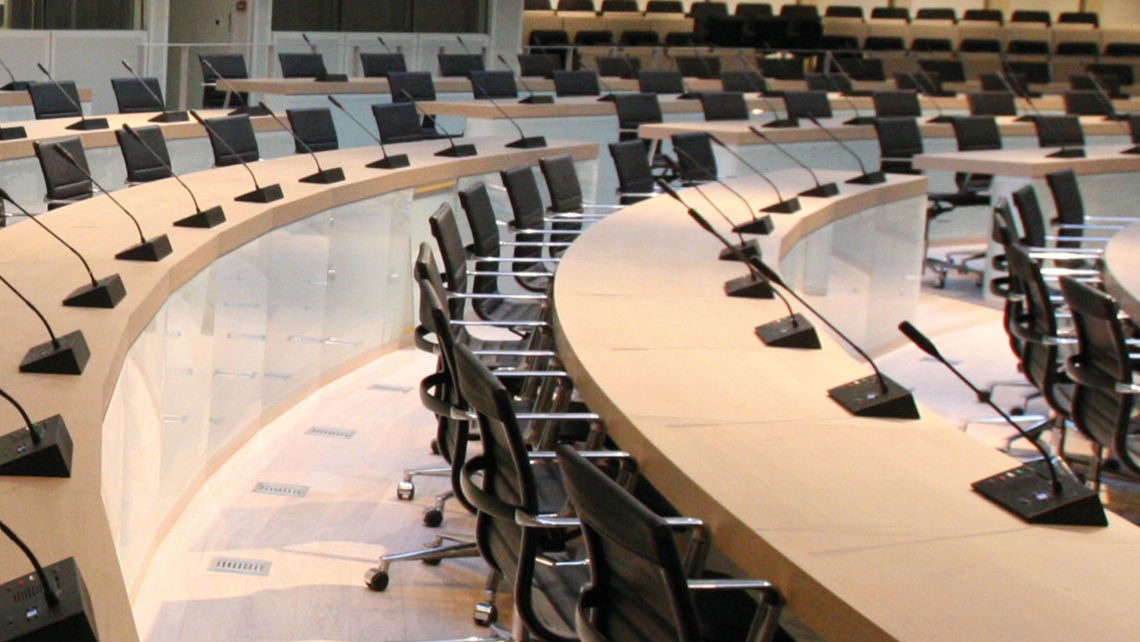Audio solution in Conference room
As a room gets bigger and the number of participants increase, your equipment needs to scale
The optimal Audio solution in Conference room depends on a wide range of factors, including the size of the room, the number of people involved, the number of presenters, and the style of presentation.The biggest factor in microphone selections is whether or not a sound reinforcement system is involved.
Huddle Room
This is a small room that accommodates 6-8 people, usually around a single table. In general, there is no need for sound reinforcement in basic meeting spaces.
However, many huddle rooms do incorporate audio or video teleconferencing, which may be a permanently installed or portable system on a rolling cart.
Because there is no PA system involved, this is a perfect situation for an area miking approach. The only microphone requirement is to avoid being too close to the loudspeaker from the teleconferencing system. If the system does not have its own dedicated microphones, try placing a couple of boundary microphones – wired or wireless – on the table. This is also a situation where 1-2 small condenser microphones hanging a few feet above the table can be useful.
Training Room/Classroom
This is a classic one-to-many communication scenario, with up to 30 students at chairs or tables facing the instructor/lecturer. The larger and more reverberant the room, the more need there is for a sound reinforcement system at the front, facing the learners. Smaller rooms that do not require a sound system may still need miking to feed streaming, videoconferencing, and/or recording of the presentation. Maximizing intelligibility is critical in any learning environment.
The lecturer may work from a podium, but is more likely to move about during the presentation to use a blackboard, whiteboard, or other tools. To accommodate
this need for hands-free voice pickup, a headworn or lavalier wireless microphone is the preferred solution.
Student questions can be fed into a distant learning link in a number of ways. A dedicated microphone can be placed at a specific table for this purpose, or a handheld wireless can be passed around as needed. Overhead miking of the seating area should only be considered when no sound reinforcement system is involved, and only in rooms with good acoustics. If the class experience is intended to be highly interactive, consider a system of desktop microphones with an automatic mixer or discussion system.
Lecture Hall
In essence, a lecture hall is a larger version of a classroom, with an audience of 50 or more. Larger facilities seat over 200 people and often have tiered, theater-style seating. A lecture situation does not accommodate miking for all audience members, and a PA system designed for high intelligibility is definitely required. Fortunately, lecture halls are relatively stable in their usage, allowing dedicated system design.
As in the classroom, a lecturer is best served by using a wireless lavalier or headworn microphone to keep both hands free, or a gooseneck or stand-mounted microphone at a podium. If it is unlikely that the instructor will be actively using visual aids, a handheld wireless is also an excellent option.
Student input is more challenging in lecture halls, since both students and the instructor may have difficulty hearing questions. This is an ideal situation to use one or two dedicated microphone stations in the aisles, placed in positions where the threat of feedback is minimal. Alternately, a handheld wireless microphone can be passed around. Despite being on the “wrong side” of the PA system, a handheld should be close enough to the talker to be relatively safe from feedback.
Videoconferencing Room
Videoconferencing systems allow two or more distant locations to communicate with simultaneous audio and video transmissions over telephone lines or broadband network connections, allowing multiple groups of people to interact in real time, and are useful for both meetings and education. There are two primary types of systems: dedicated and desktop, and they can be based on either traditional telephony or an enterprise VoIP system.
By their very nature, videoconferencing systems involve sound reinforcement of the audio from the distant site. Technologies like automatic mixing and acoustic
echo cancellation (AEC) are usually included. These building blocks are usually present, whether it’s a singleuse desktop system, a portable cart-based system for
small meeting rooms, or a permanent system in a dedicated videoconferencing room.
Modern videoconferencing is fully digital, using compression technologies to coordinate the audio and video streams in real time for transmission over a data network. In addition to live audio and video in the participating rooms, the content may also be ported as a data stream for archiving.
Boardroom
A boardroom is not unlike a standard meeting room, but incorporates turnkey control systems to enable participants to focus on the proceedings rather than the
AV equipment. Typically, a control system, such as those made by AMX®, Crestron®, or Extron®, is programmed by the room designer to enable any needed equipment through a single touchscreen remote control. Any sound reinforcement is usually limited to videoconferencing systems and playback systems for video.
Microphones are common in boardrooms, both for teleconferencing and as a means of recording the proceeding for archival purposes. Automatic microphone
systems are popular in boardrooms, as they ensure full capture of the proceedings without the need for a system operator in the room.
In a boardroom, aesthetics are always a major consideration, particularly in mic selection and placement. Permanent microphones may pose a challenge, as they require drilling through expensive conference tables to run cables. For this reason, tabletop wireless microphones are becoming very popular in the boardroom – especially models that offer audio encryption – as they eliminate unsightly cables, preserve the conference table, and can be quickly removed when not in use.
City Council/Courtroom/Large Meeting Facilities
The bigger the meeting facility, the greater the need for advanced systems. With a chairman presiding over a large group like a city council, usually with an audience gallery, a comprehensive sound system with advanced features is required. International conferences are even more demanding, with interpretation capabilities often needed.
Such facilities have complex requirements, including the need for participants to hear each other across the room, for the audience or gallery to hear everything, and of course the need to maintain some semblance of order with so many participants. Sound systems must be carefully designed, with multiple destinations including monitoring for the participants, a PA system for the audience, and separate feeds for recording, for the press, for cable broadcast and streaming, etc
Automatic microphone systems are a starting point. The ability to minimize the number of open microphones by turning them on only when the participant speaks, then smoothly off when not in use, helps maintain intelligibility while ensuring that all talkers are heard. In addition, many automatic microphone systems include logic switches to create priority for the chairperson’s microphone.
We’d love To Meet You In Person Or Via The Web!
Main Office: Suite M-01, 512, 3rd Street, Abu Dhabi, UAE
Phone: + 971 2 6767019
WhatsApp: + 971 55 3979668
Email: web@OfficePlusUAE.com


